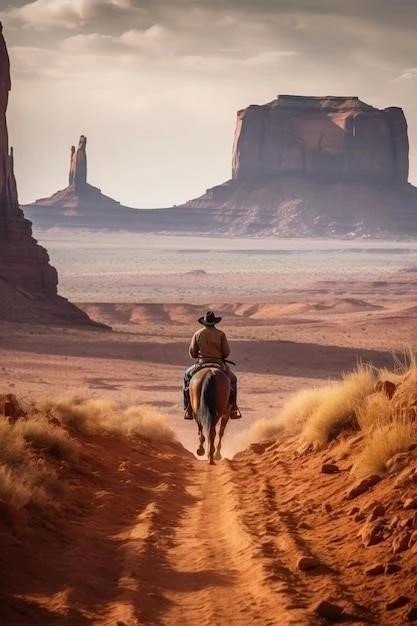Major Physiographic Regions
The United States encompasses a wide array of diverse physiographic regions. The vast Interior Plains, stretching from the Appalachian Mountains to the Rocky Mountains, are characterized by low relief and extensive drainage systems. The ancient, glacially sculpted Canadian Shield extends southward into the northern United States, forming a region of rugged topography and thin soils. The imposing Rocky Mountains, a young and active mountain range, dominate the western landscape, while the geologically diverse Basin and Range Province, with its alternating basins and ranges, lies to the west of the Rockies. The Pacific Coast is marked by the towering peaks of the Cascade Range and the Sierra Nevada, shaped by volcanic activity and tectonic uplift.

Official Census Regions and Divisions
For statistical purposes, the United States Census Bureau divides the country into four primary geographic regions: the Northeast, the Midwest, the South, and the West. These broad regions are further subdivided into nine divisions, providing a more detailed spatial framework for data analysis and demographic study.
Northeast Region
The Northeast encompasses two divisions: the New England division, comprised of Maine, New Hampshire, Vermont, Massachusetts, Rhode Island, and Connecticut; and the Middle Atlantic division, which includes New York, New Jersey, and Pennsylvania. Characterized by a humid continental climate, the Northeast is the nation’s most densely populated region and a hub for finance, education, and technology.
Midwest Region
The Midwest region is divided into two divisions: the East North Central division, consisting of Ohio, Indiana, Illinois, Michigan, and Wisconsin; and the West North Central division, which includes Minnesota, Iowa, Missouri, North Dakota, South Dakota, Nebraska, and Kansas. Known for its expansive plains and agricultural productivity, the Midwest plays a vital role in the nation’s food production and manufacturing industries.
South Region
The South is the largest of the four census regions and is subdivided into three divisions: the South Atlantic division, comprised of Delaware, Maryland, the District of Columbia, Virginia, West Virginia, North Carolina, South Carolina, Georgia, and Florida; the East South Central division, consisting of Kentucky, Tennessee, Alabama, and Mississippi; and the West South Central division, which includes Arkansas, Louisiana, Oklahoma, and Texas. The South is experiencing rapid population growth and economic diversification, with significant contributions from the energy, aerospace, and tourism sectors.
West Region
The West region encompasses two divisions: the Mountain division, consisting of Montana, Idaho, Wyoming, Colorado, New Mexico, Arizona, Utah, and Nevada; and the Pacific division, which includes Washington, Oregon, California, Alaska, and Hawaii. Characterized by vast distances, diverse landscapes, and a significant Hispanic population, the West is a major center for technology, entertainment, and international trade.

Cultural and Geographic Regions
Beyond the official census divisions, the United States exhibits a rich tapestry of cultural and geographic regions, each with its distinct characteristics, traditions, and identities. These regions, shaped by historical settlement patterns, economic activities, and shared cultural traits, contribute to the nation’s remarkable diversity and regional distinctiveness.
New England, with its colonial heritage, maritime traditions, and renowned academic institutions, stands apart from the Mid-Atlantic region, characterized by its urban dynamism, industrial legacy, and ethnic pluralism. The South, often associated with its agricultural heritage, warm hospitality, and complex history, encompasses diverse subregions, from the coastal plains to the Appalachian Mountains.
The Midwest, often called “America’s Heartland,” evokes images of vast farmlands, industrial cities, and strong community values. Within this region, the Great Lakes states, with their industrial heritage and ties to water-based transportation, contrast with the Great Plains states, known for their agricultural production and rural character.
The West, a region of expansive landscapes and diverse cultures, encompasses the rugged Rocky Mountains, the arid deserts of the Southwest, and the Pacific Coast, renowned for its technological innovation and cultural influence. The Southwest, with its unique blend of Native American, Hispanic, and Anglo cultures, stands apart from the Pacific Northwest, known for its environmental consciousness, independent spirit, and thriving technology sector.

Landmarks and Natural Wonders

The United States, with its vast and diverse landscapes, is home to a remarkable collection of iconic landmarks and natural wonders that embody the nation’s natural beauty and cultural heritage. From soaring mountain peaks and ancient forests to dramatic canyons and cascading waterfalls, these sites attract visitors from around the globe and inspire awe and wonder.
The Grand Canyon, a UNESCO World Heritage Site, stands as a testament to the power of erosion, its immense scale and intricate layers of colorful rock formations captivating all who gaze upon it. Yellowstone National Park, the world’s first national park, boasts geothermal wonders such as geysers, hot springs, and mud pots, along with abundant wildlife and pristine forests. Yosemite National Park, renowned for its towering granite cliffs, giant sequoia trees, and cascading waterfalls, exemplifies the grandeur of Sierra Nevada landscapes.
The Statue of Liberty, a symbol of freedom and democracy, welcomes visitors to New York Harbor, while the Golden Gate Bridge, an engineering marvel, connects San Francisco to Marin County. Mount Rushmore, with its colossal sculptures of four American presidents, stands as a tribute to leadership and national pride. The National Mall in Washington, D.C., lined with monuments and memorials, serves as a poignant reminder of the nation’s history and values.
From the rugged coast of Maine to the volcanic islands of Hawaii, from the snow-capped peaks of the Rockies to the sun-drenched beaches of Florida, the United States offers a treasure trove of natural and man-made wonders, each contributing to the nation’s rich tapestry of beauty and heritage.

Climate Zones and Weather Patterns
Spanning a vast expanse of the North American continent, the United States encompasses a wide range of climate zones, each characterized by distinct temperature ranges, precipitation patterns, and seasonal variations. From the humid subtropical conditions of the Southeast to the arid deserts of the Southwest, the nation’s diverse climates influence its ecosystems, agricultural practices, and human settlement patterns.

The eastern United States experiences a humid continental climate, marked by warm, humid summers and cold, snowy winters. The Southeast, influenced by its proximity to the Gulf of Mexico, experiences hot, humid summers and mild winters, with abundant rainfall throughout the year. The interior plains are characterized by a continental climate, with hot summers, cold winters, and moderate precipitation. The western United States exhibits a diverse range of climates, from the Mediterranean climate of California, with its warm, dry summers and mild, wet winters, to the arid and semi-arid conditions of the Great Basin and the Southwest, where rainfall is scarce and temperatures fluctuate widely.

The nation’s varied topography and latitudinal extent contribute to regional variations in weather patterns. The Rocky Mountains, for example, create a rain shadow effect, resulting in drier conditions on their eastern slopes and wetter conditions on their western slopes. Coastal areas are influenced by ocean currents, which moderate temperatures and influence precipitation patterns. The Gulf Stream, a warm current flowing northward along the Atlantic coast, brings warm, humid air to the Southeast, while the California Current, a cold current flowing southward along the Pacific coast, moderates temperatures and reduces rainfall in California.










